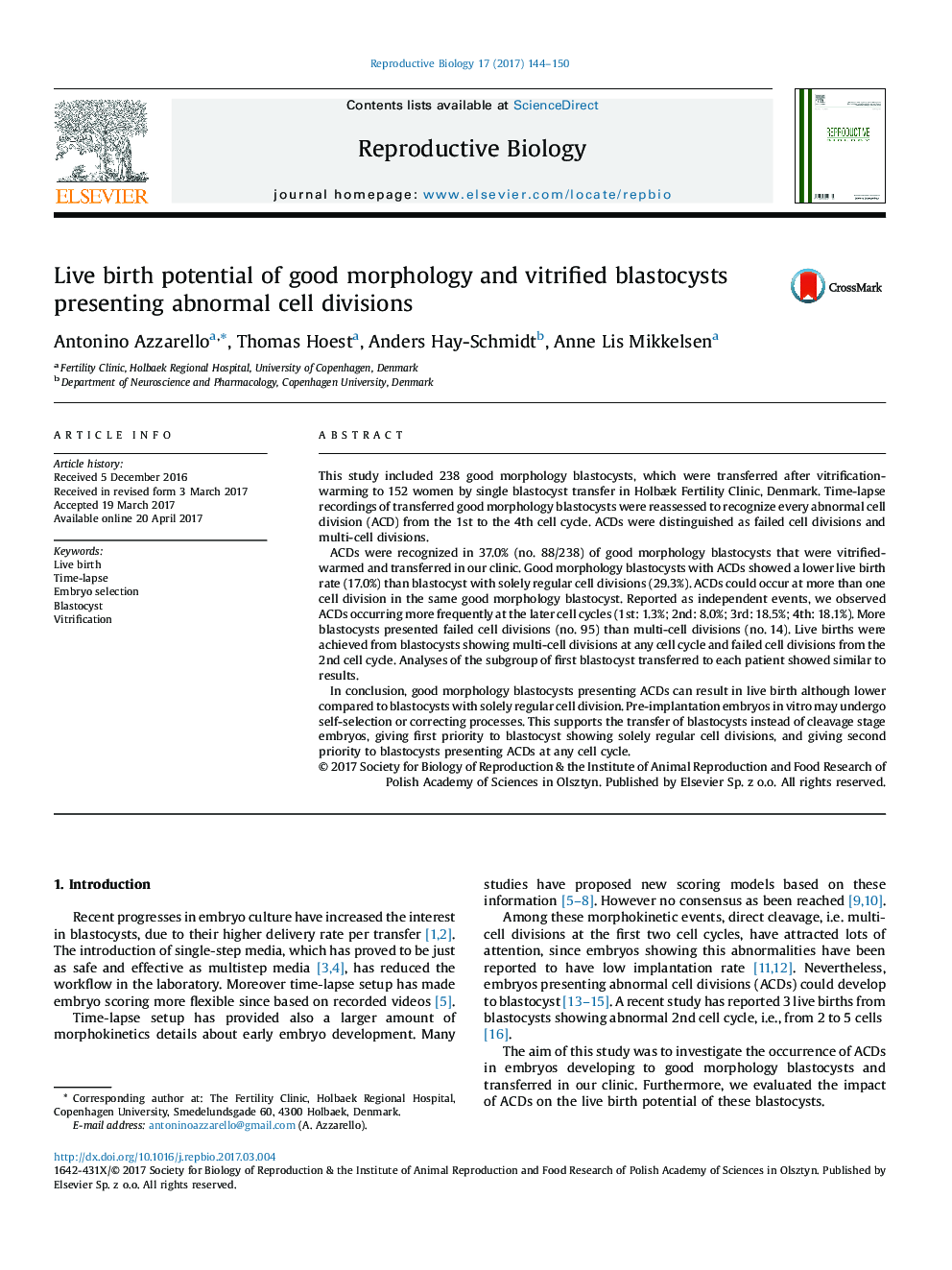| Article ID | Journal | Published Year | Pages | File Type |
|---|---|---|---|---|
| 5519053 | Reproductive Biology | 2017 | 7 Pages |
This study included 238 good morphology blastocysts, which were transferred after vitrification-warming to 152 women by single blastocyst transfer in Holbæk Fertility Clinic, Denmark. Time-lapse recordings of transferred good morphology blastocysts were reassessed to recognize every abnormal cell division (ACD) from the 1st to the 4th cell cycle. ACDs were distinguished as failed cell divisions and multi-cell divisions.ACDs were recognized in 37.0% (no. 88/238) of good morphology blastocysts that were vitrified-warmed and transferred in our clinic. Good morphology blastocysts with ACDs showed a lower live birth rate (17.0%) than blastocyst with solely regular cell divisions (29.3%). ACDs could occur at more than one cell division in the same good morphology blastocyst. Reported as independent events, we observed ACDs occurring more frequently at the later cell cycles (1st: 1.3%; 2nd: 8.0%; 3rd: 18.5%; 4th: 18.1%). More blastocysts presented failed cell divisions (no. 95) than multi-cell divisions (no. 14). Live births were achieved from blastocysts showing multi-cell divisions at any cell cycle and failed cell divisions from the 2nd cell cycle. Analyses of the subgroup of first blastocyst transferred to each patient showed similar to results.In conclusion, good morphology blastocysts presenting ACDs can result in live birth although lower compared to blastocysts with solely regular cell division. Pre-implantation embryos in vitro may undergo self-selection or correcting processes. This supports the transfer of blastocysts instead of cleavage stage embryos, giving first priority to blastocyst showing solely regular cell divisions, and giving second priority to blastocysts presenting ACDs at any cell cycle.
